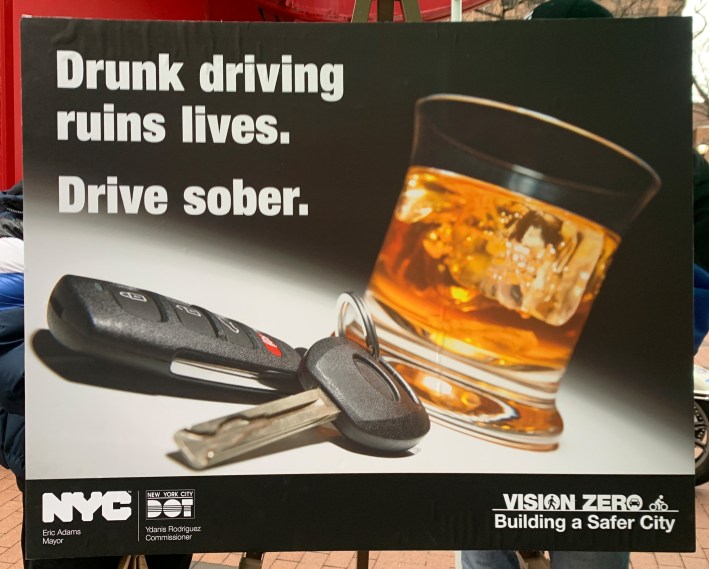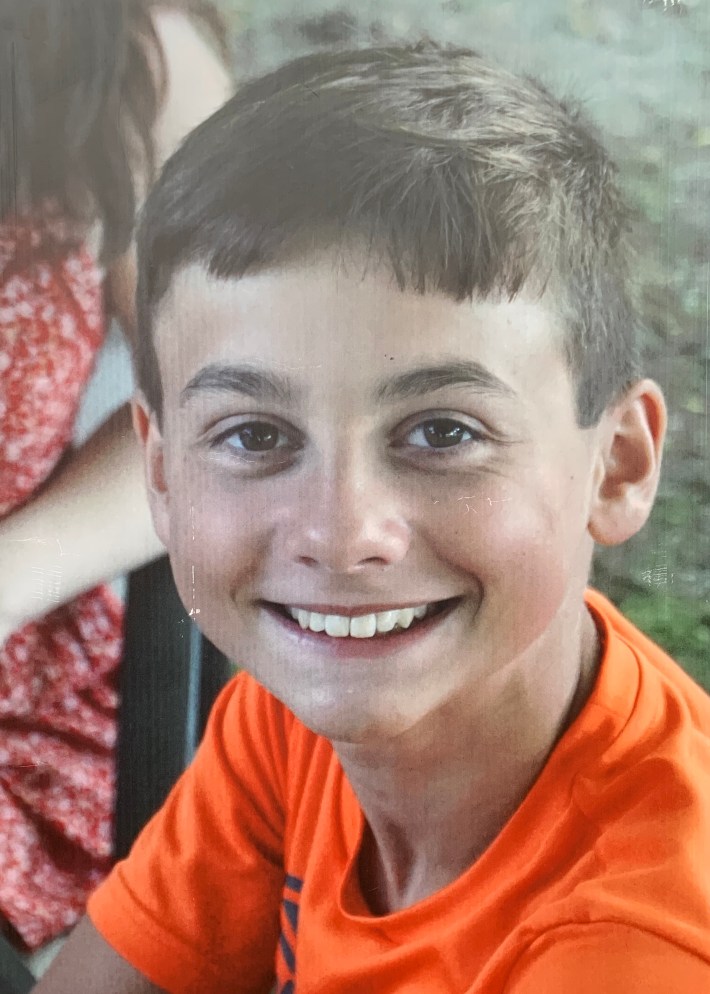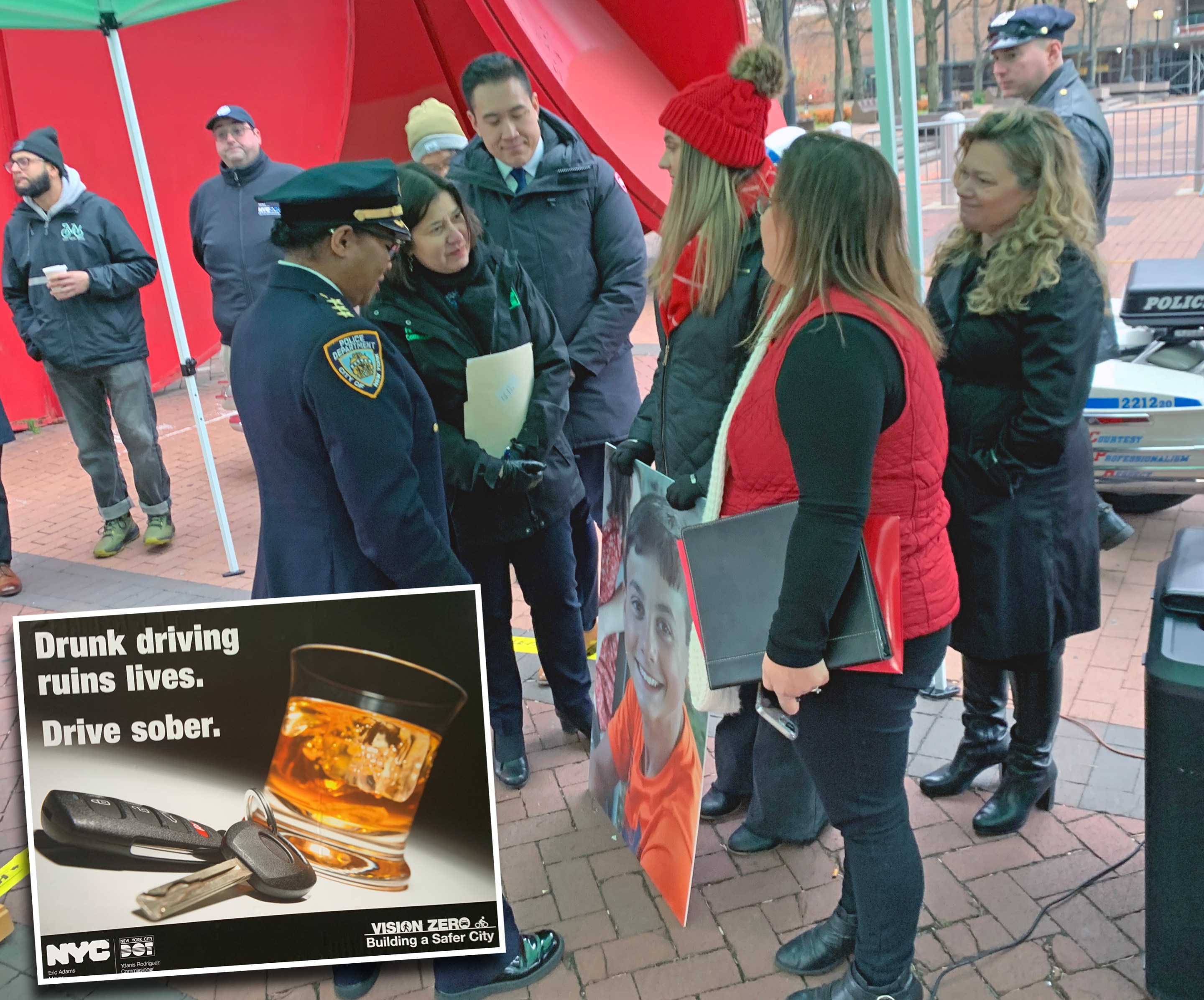
If at first you don’t succeed, dry dry again.
City transportation officials announced on Thursday that they will “fight” aggressively in Albany next year for passage of a proposal to lower the drunk driving threshold — a bill that has been proposed more or less every year, yet never makes it out of committee.
The current legislation, carried by Sen. John Liu (D-Queens) and Assembly Member Jo Anne Simon (D-Brooklyn), would change the law so that “driving while intoxicated” would be defined as anything above a blood-alcohol content of 0.05 percent, down from the current 0.08 percent. Many nations around the world have adopted that standard, but only Utah in the United States has the stricter threshold.
The bill was re-submitted in the last legislative session, but went nowhere, and will be re-introduced next year. Currently, a blood-alcohol level between 0.05 and 0.08 percent is called “driving while ability impaired,” but the punishment for it is far lower than for the more egregious driving while intoxicated. Department of Transportation Deputy Commissioner Margaret Forgione said that having two thresholds “is not helpful.”
“There is not really a safe level of drinking and driving, but the law suggests there is,” Forgione said, adding that too many drivers consume a little alcohol only to “lose their inhibitions and good judgment and get behind the wheel thinking they are ‘not that drunk.’ And the consequences can be deadly.”
In 2021, 42 people were killed in crashes that police linked to drunk driving, up 60 percent from a three-year average in previous years of 27, the DOT said. Forgione estimated that lowering the blood-alcohol threshold would reduce traffic fatalities by 10 percent — which is almost exactly what Utah found after it lowered its threshold in 2019.

The announcement of the first part of the city’s upcoming legislative push in Albany came at a presser on Thursday outside 1 Police Plaza that also featured messaging (right) about the NYPD’s coming crackdown on drunk driving and an education campaign aimed at reducing drunk driving.
The messaging did not explictly advise drivers to simply not drive when they are going to an event where alcohol will be offered. Studies show that a key reason that people drive drunk — beyond the drinking part of it — is that they’ve already driven to an event and don’t want to leave their car.
And very few drivers realize just how little booze it takes to a blood alcohol content of .05 percent; researchers say it roughly equates to a 185-pound man drinking four alcoholic beverages on an empty stomach over a two-hour period, or a 154-pound woman having three drinks. Decades of studies have shown that drivers who blow a 0.05 are 1.38 times more likely to be involved in a collision than a sober motorist — and drivers who blow an 0.08 are 2.69 times more likely to crash.

So Streetsblog asked both Royster and Forgione why the drunk driving messaging was so focused on getting drivers not to drink rather than getting drivers not to drive in the first place (put another way: “Don’t drive” is a shorter, more concise slogan than “Don’t drink and drive”).
Forgione said: “I completely agree with what you’re suggesting. What it’s all about is making deliberate, methodic plans for what you’re going to do. So if you are a driver and you’re making this flawed assumption that ‘I’ll hardly drink and I’ll be OK,’ that should not be part of the equation. Just assume you’re going to go to a party and you’re not going to be fit to be able to get home.”
Both neither Forgione nor Royster specifically said, “Don’t drive to the party,” so it fell to an advocate to put the day’s announcements in perspective.
“We want to start changing the idea behind this because it’s not about arresting everyone in New York State for DWI,” said Mothers Against Drunk Driving member Alisa McMorris, whose son, Andrew, was killed by a drunk driver in 2018. “We want people people to make choices before they leave their home.”
The city DOT does often urge drivers to not drive — such as on “Gridlock Alert” days. This year, for example, Commissioner Ydanis Rodriguez kicked off the holiday season by telling New Yorkers that “sustainable transit options are always the best choice to get around New York City.”
“We encourage everyone to take transit, bike, or walk during upcoming Gridlock Alert Days,” he said.
But that was not the messaging on Thursday’s drunk-driving press conference. Royster consistently stressed how drivers should behave rather than focusing on the initial bad decision: to drive.
“Our message is simple here today: No matter what you drive, if you are stopped and you’re driving while you’re impaired, you will be arrested. No exceptions. No excuses. So do the right thing and call a friend to drive you home or take a taxi. Make the right choice behind the wheel.”
Even the Senate bill’s sponsor John Liu focused on urging drivers to not drive drunk rather than not drive at all.
“There is no simper way to reduce drunk driving than to keep drivers from getting behind the wheel after they’ve been drinking,” he said in a statement that ignored the simplest way to avoid not only drunk driving, but other reckless driving practices: to not drive at all.
I’m live at the ?@NYPDTransport? and ?@NYC_DOT? presser on the new drunk driving crackdown where the agencies will show new messaging. I fixed it for them. pic.twitter.com/fMNexsUsIV
— Gersh Kuntzman (@GershKuntzman) December 22, 2022






